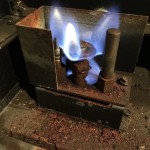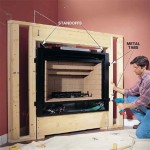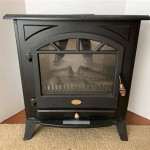```html
Superior Gas Fireplace Operating Manual: A Comprehensive Guide
The Superior Gas Fireplace provides a source of supplemental heat and aesthetic ambiance to a living space. This operating manual provides essential information regarding its safe and efficient operation, maintenance, and troubleshooting. Adhering to these guidelines contributes to user safety, extends the lifespan of the appliance, and optimizes its performance. This article covers fundamental aspects of operating a Superior Gas Fireplace, designed to be a comprehensive and user-friendly resource.
Prior to operating the gas fireplace, it is crucial to thoroughly inspect the unit and its surrounding area. Ensure that the area surrounding the fireplace is clear of combustible materials, including furniture, draperies, and paper products. Maintain a safe distance as specified in the manufacturer's instructions, typically a minimum of 36 inches. Check that the glass door is properly sealed and undamaged. A compromised seal can lead to inefficient operation and potential safety hazards. Verify that the venting system is unobstructed and free of debris. Blocked vents can result in carbon monoxide buildup, presenting a serious health risk.
Before initiating the ignition sequence, familiarize yourself with the fireplace controls. Locate the gas shut-off valve, typically situated near the fireplace or in an adjacent area. Understand its operation and ensure it is easily accessible in case of emergencies. Identify the pilot light assembly and the igniter button. The igniter initiates the spark that lights the pilot flame. Determine if the fireplace utilizes a standing pilot or an intermittent pilot ignition system. Familiarizing yourself with the specific ignition system of your unit will greatly aid in the starting process.
Ignition Procedures: Lighting the Pilot Light
The ignition procedure can vary based on the specific model of the Superior Gas Fireplace. However, a general procedure for lighting the pilot light is as follows:
First, turn the gas control knob to the "OFF" position and wait for at least five minutes to allow any accumulated gas to dissipate. This minimizes the risk of a flash fire during ignition. Locate the pilot light assembly, which is typically situated near the burner. Turn the gas control knob to the "PILOT" position. Press and hold the gas control knob inward while simultaneously pressing the igniter button repeatedly. This releases gas to the pilot burner and generates a spark to ignite the gas. Continue holding the gas control knob inward for approximately 20-30 seconds after the pilot light is lit. This allows the thermocouple to heat up and maintain the pilot flame. If the pilot light goes out when you release the gas control knob, repeat the process, ensuring that you hold the knob down for a longer duration. If the pilot light still fails to remain lit, consult the troubleshooting section of this manual or contact a qualified service technician.
Once the pilot light is lit and remains lit, turn the gas control knob to the "ON" position. This allows gas to flow to the main burner. Depending on the fireplace model, you may need to use a separate switch or remote control to activate the main burner. Follow the manufacturer's specific instructions for activating the main burner.
Operating the Main Burner
After the pilot light is established and the gas control knob is in the "ON" position, the main burner can be activated. The method for activating the main burner varies depending on the fireplace model. Some models have a simple on/off switch, while others use a remote control or a thermostat. Refer to the manufacturer’s instructions for the specific operating method for your unit.
If the fireplace uses a remote control, ensure that the remote has fresh batteries and is properly paired with the fireplace receiver. Point the remote control towards the fireplace receiver and press the "ON" button. If the fireplace uses a thermostat, set the desired temperature. The fireplace will automatically turn on and off to maintain the set temperature. Observe the flame pattern of the main burner. The flame should be blue with yellow tips and should burn evenly across the burner. Any unusual flame patterns, such as flickering flames or excessive yellow flames, may indicate a problem with the gas supply or the burner itself. In such cases, turn off the fireplace and consult a qualified service technician.
Adjustment of the flame height may be possible on some models. This can be achieved via the adjustment knob on the gas valve or via the remote control. Refer to the unit’s specific instructions. Avoid setting the flame height too high, as this can lead to inefficient operation and potential safety hazards. Always adhere to the manufacturer's recommendations for flame height settings.
Never leave the fireplace unattended while it is operating. Supervise children and pets near the fireplace to prevent accidental contact with the hot surface. Ensure that all users are aware of the potential dangers associated with operating a gas fireplace and follow the safety precautions outlined in this manual.
Maintenance and Troubleshooting
Regular maintenance is crucial for ensuring the safe and efficient operation of the Superior Gas Fireplace. At least annually, a qualified service technician should inspect the fireplace and its venting system. This inspection should include checking for gas leaks, inspecting the burner and its components, cleaning the venting system, and verifying the proper operation of the safety controls.
The homeowner can perform some basic maintenance tasks. Periodically clean the glass door of the fireplace with a non-abrasive glass cleaner. This will help maintain visibility and prevent the buildup of soot and grime. Vacuum the area around the fireplace to remove dust and debris. This will help prevent the buildup of combustible materials near the fireplace. Inspect the venting system for any signs of damage or blockage. If you notice any problems, contact a qualified service technician.
Common issues can arise with gas fireplaces. If the pilot light fails to ignite, check the gas supply and ensure that the gas control knob is in the correct position. If the pilot light ignites but goes out, the thermocouple may be faulty. If the main burner fails to ignite, check the batteries in the remote control and ensure that the remote is properly paired with the fireplace receiver. If the flame pattern is unusual, the burner may be dirty or the gas supply may be inadequate. If you experience any of these problems, consult the troubleshooting section of this manual or contact a qualified service technician.
If a gas leak is suspected, immediately turn off the gas supply at the meter and evacuate the premises. Do not use any electrical devices, including telephones, as this could ignite the gas. Contact the gas company or a qualified service technician to repair the leak. Never attempt to repair a gas leak yourself.
Replacement parts should originate from the original manufacturer or be approved specifically for use with the Superior Gas Fireplace. Using unauthorized parts could compromise the safety and performance of the fireplace. Contact the manufacturer or an authorized dealer to obtain replacement parts.
Modifications to the gas fireplace or its venting system are strictly prohibited. Any unauthorized modifications could compromise the safety and performance of the fireplace and may void the warranty. Only qualified service technicians should perform repairs or modifications to the fireplace.
Consult with local building codes and regulations for specific requirements regarding the installation and operation of gas fireplaces. Adherence to these regulations is essential for ensuring the safe and compliant operation of the fireplace. Properly installed and maintained gas fireplaces can provide years of efficient and reliable service. However, neglecting preventative maintenance and safe operating procedures can lead to hazardous situations. Always prioritize safety and consult with qualified professionals when needed.
By understanding the intricacies of its operation, performing necessary maintenance, and strictly adhering to the outlined safety measures, the Superior Gas Fireplace will undoubtedly provide a warm and comforting ambiance for many years to come.
```
40 Superior Gas Fireplace Direct Vent

Superior Drt2033 33 Inch Electronic Ignition Direct Vent Gas Fireplace With Aged Oak Logs

Superior 35 Inch Direct Vent Traditional Gas Fireplace Drt3035 North Country Fire

Superior 33 Inch Direct Vent Gas Fireplace

Superior 42 Inch Electronic Ignition Vent Free Outdoor Gas Fireplace With Remote Vre3242

Superior 42 Traditional Vent Free Gas Fireplace Vrt3542 Us

Superior 36 Inch B Vent Radiant Gas Fireplace Brt4536 North Country Fire

Superior 40 4000 Series Direct Vent Gas Fireplace Electronic Ignition

Superior Fireplaces Drt3040 40 Direct Vent Fireplace

Superior Drt2035 Gas Fireplace Aries 35 Contemporary Electronic Ignit
Related Posts








